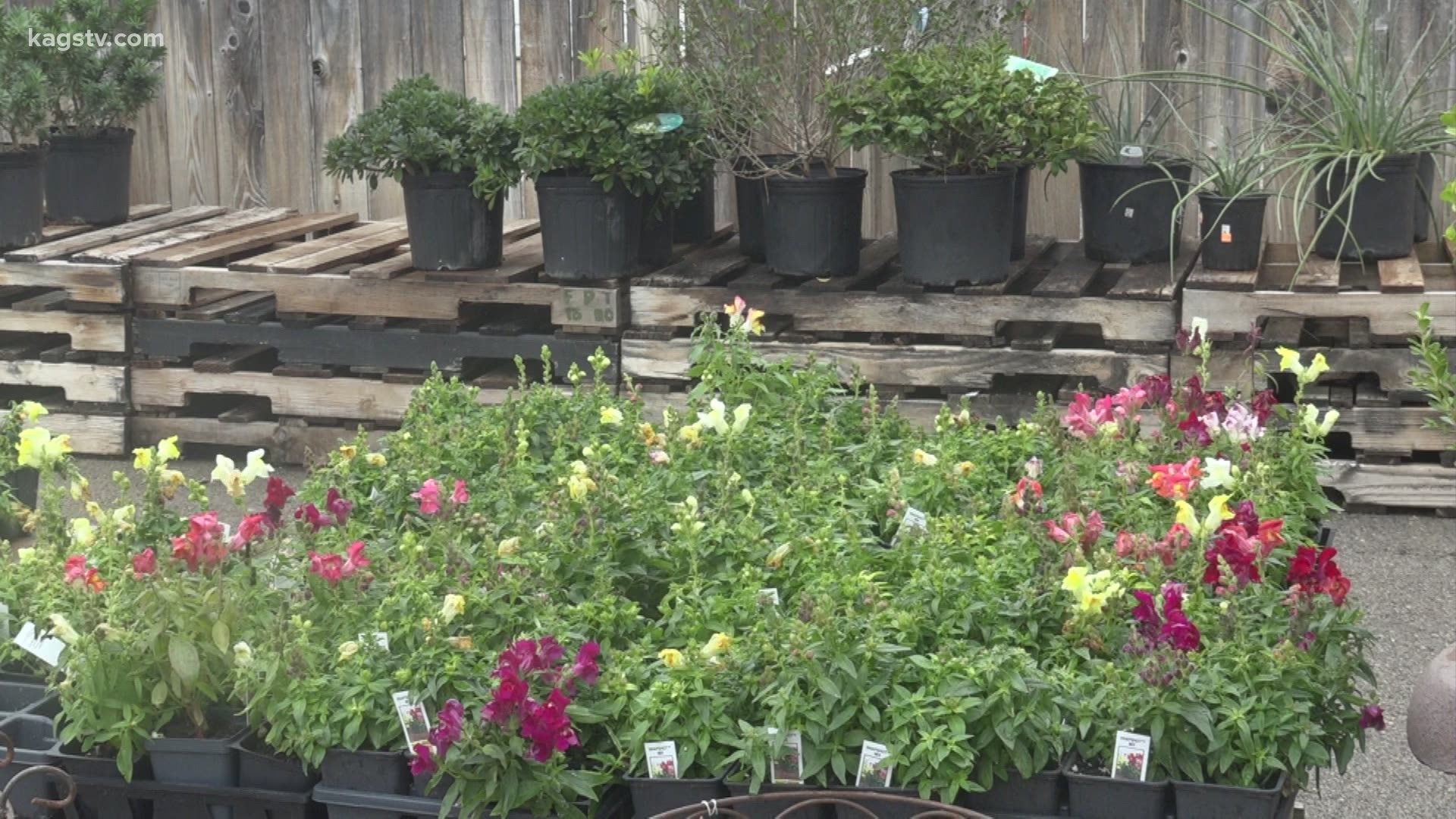COLLEGE STATION, Texas — The cold weather is bringing a heavy dose of wind and rain and it's also bringing some chilly, freezing temperatures with it. As humans, we can always put more layers on to warm up, but, when it comes to our plants, they need our help.
Just as the weather changes with the months, so do the plants and vegetables you should be growing each season.
“You ought to be growing cold crops right now, and these should be able to take the freeze," said Anne Daleon. Daleon is the manager at the Farm Patch Garden Center in Bryan. "Some of the lettuces you may have to cover every now and then, like your broccoli and your cauliflower, cabbages, you’ll be fine. You want to make sure any plant exposed to freezing temperatures is well watered before the freeze gets here. This helps to keep the plant viable and growing."
With the different climate Texas is seeing this year, you may need to change your watering routines
“Typically when we get a cold front around here, we do get rain with it. This year is a little different so you probably have to add more water than what you normally would, but as the temperatures get cooler, a plant uses less and less water through transpiration, so you provide less water,” said Daleon
To protect your plants in the cold, you might even need to create a makeshift shelter. Skip Richter, who is a horticulturist with Texas A&M Agrilife says this is particularly important.
“Make the cover go over the plant and straight down to the soil," Richter said. We’re trying to protect the rising warmth from the soil from getting away and holding it around that plant."
Richter said you can use almost any material to cover your plants. Frost blankets allow for some air movement through them. Plastic is also recommended but be aware it could burn your leaves if they touch. With less sunlight on rainy winter days, you can provide manual heat and light to protect your plants even more.
“Say you put a 100-watt light bulb under there," said Richter. "Maybe one of those clamp lights with the aluminum shield on it. A 100-watt puts out quite a bit of warmth and we’re not trying to make it toasty under the cover, we’re just trying to make it not freeze."
Richter said every plant varies on how cold sensitive it is and this can affect how long it may survive unattended in a freeze. Having concrete in your gardens can also radiate heat to keep your plants warm in the winter.

